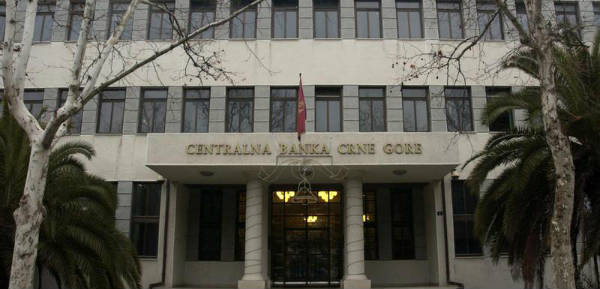CIN AND VIJESTI INVESTIGATION ON THE ATLAS AFFAIR: INTERESTS OF KNEZEVIC, DJUKANOVIC AND STATHIS VERSUS NATIONAL INTERESTS

On Christmas Eve 2018 Montenegro’s finance minister Darko Radunovic received a PBG2 document from the World Bank. The document defined the terms and obligations that the country must comply with before getting favourable loans under World Bank guarantees. Montenegro is in dire need of those loans as they help the public finances and service the country’s huge public debt.
The World Bank clearly says that Montenegro should focus on saving the entire banking system instead of ad hoc rescue operations in particular banks. It further demands clear plans on how to resolve the capital inadequacy problems in two particular banks.
This is not the first warning though. The World Bank requested supervision of thee problematic banks before coming up with the guarantees in 2017. It’s quite obvious that the banking system control has been a problem for a while as the Central Bank wouldn't bother too much in doing its own job. The available auditing reports show that certain banks had serious problems to stay within the parametres of legality and that was being tolerated. The reports point out to Dusko Knezevic’s Atlas Bank and Investment Bank of Montenegro. However the reports also target Prva Bank (the First Bank) of the Djukanovic family and Universal Capital Bank of Greek businessman and media magnate Petros Stathis.
ATLAS BANK – problems since 2011
Every external auditing report on Atlas Bank since 2011 contained phrases like “qualified opinion“ and “warning“. The auditors in their reports pointed to certain items where the capital was overrated, the losses underrated while the banking exposure to connected parties and other banks was beyond the limit of legality. That was a reason for alarm bells in the Central Bank as it clearly showed that the capital and the customers’ deposits were at risk. Our reliable sources tell us that the Central Bank moved at last in 2015 to review Atlas Bank. The then vice-governor Velibor Milosevic, who was in charge of controlling the banking system, proposed the emergency measures. His proposal wasn't accepted though. An external auditor claimed that Atlas Bank took certain measures in 2016 to make its business operations more stable thus confirming that the bank was in serious trouble while the Central Bank of Montenegro stood aloof. After two years the Central Bank requested €10 million recapitalisation of Atlas Bank.
Montenegro had to prove in 2018 that it did comply with the PBG1 document requirements set by the World Bank in order to get the WB guarantees pursuant to the agreement made in 2017. The agreement clearly set forth how to deal with the problematic banks. Thus on 7 Dec 2018 the Central Bank of Montenegro imposed temporary administration in Atlas Bank and IBM. Three days later the governor met the WB representatives. The last auditing report for 2017 was negative. The report was published long after the deadline. It was actually almost half a year late and came to light in December 2018 after the intervention in Atlas Bank.
IBM – at first it was all well and then bankruptcy came out of the blue
In all reports since 2012 the auditor expressed reservations towards this bank of Dusko Knezevic. The auditor later discloses that in April 2014 the Central Bank requested certain improvements in the bank’s business operations. In subsequent reports the auditor writes that he was not convinced in the veracity of the information submitted by the IBM management. The auditor further writes that the CB gave a warning in April 2015 in regard to excessive exposure of the two banks and connected parties which pointed out that IBM was operating beyond the limits of legality. Thus other customers were exposed to potential risks. However, IBM heeded the warning and its exposure went down in the tenure of the CB governor Dakic in 2015. Lastly, the auditor writes that, apart from his skepticism, he believes that that the bank’s capital may have been overrated. He believed that certain shares in the bank’s possession as well as stakes in other companies were bloated.
The CB governor announced the IBM bankruptcy in January even though just a few weeks before he assured the public and the depositors of Atlas Bank and IBM that they were safe from bankruptcy and that their deposits were not in danger. The CB justified the bankruptcy introduction by appealing to the fall of solvency, liquidity and the capital level bellow the red line. Some analysts were confused and wondered how come Atlas Bank was spared from bankruptcy since certain parametres were even worse than those of IBM. They warned about Atlas Bank’s solvency which went bellow the prescribed minimum thus qualifying it for bankruptcy.
The governor said that Atlans Bank would be recapitalised. However does it make sense to anyone to invest in this bank after all it went through? Maybe the CB thought that the Atlas bankruptcy could disrupt the banking system since Atlas Bank was much bigger than IBM. Small depositors keep some €100 million in Atlas Bank while the Airports of Montenegro,
Prva Bank – weak solvency despite lavish support
Despite the government rescue operation of the Prva Banka in 2010, which was €44 million worth, the bank of the ruling Djukanovic family didn't manage to completely stay within legality. Most auditing reports since 2012 express reservations and warn of the bank’s exposure to connected parties beyond the lawful limits. Furthermore, certain items in the bank report were not in line with international financial standards. In some cases the losses were diminished and the auditors could not always rely on the data supplied by the bank management.
The report further states that on 9 Mar 2012 the Central Bank asked Prva Bank to increase the solvency ratio to 12% and to keep it on that level at least until the year’s end. That shows that despite the €44 million injection the Djukanovic family’s bank had serious solvency issues. However, Prva Bank didn't heed the CB request and the solvency ratio stood at 10.63% at the years’s end. Furthermore, Prva Bank was not disciplined for noncompliance.
The CB asked the bank again in Feb 2014 to increase its solvency. The bank complied only towards the end of the year.
It’s interesting to note that the CB asked Prva Bank to increase its solvency ratio to 12% even though the law prescribes 10% as the bottom line. That hints to certain issues in Prva Bank that required an extra attention. The auditors expressed their reservations in regard to Prva Bank in the 2016 and the 2017 reports. Nonetheless, the Central Bank showed no concern despite hundreds of millions of euros of deposits that the state run companies, municipal governments, state ministries and ordinary people kept in Prva Bank.
The latest available information show no solvency problems in the bank and its ratio stands around 13%.
Universal Capital Bank (UCB)– exposure soared up to 288 %
UCB is owned by Petros Stathis, a businessman from Greece. This bank also operated beyond legal parametres since it had high exposure towards companies linked with the owner. Although the law allows up to 25% exposure the bank’s exposure in 2014 stood at 267% which rose to 288% in 2015. It shows that the bank was founded to conduct transactions of Petros Stathis and his interconnected partners. Shockingly, the Central Bank was tolerating such behaviour. Even after the CB finally issued a warning in 2016 the UCB exposure stood above the red line at 53% in the years’s end. Moreover, the bank of Stathis continued to operate beyond the legal parametres in 2017 with exposure as high as 34%. To remind, the consortium of journalists which included the Vijesti conducted an investigation which uncovered fishy transactions of Stathis’ partner Wei Seng Paul Phua, who is under investigation in the USA and Switzerland.
No collaboration with the World Bank leads to bankruptcy
The case of those four banks shows that the Central Bank (under Milojica Dakic and his successor Radoje Zugic) failed to properly control the banking sector and that some banks were allowed to break law and violate the standards. Thus the CB endangered the country’s whole financial system. It further jeopardised the good standing of Montenegro before international financial institutions (primarily the World Bank and the IMF). Their support is crucial in getting favourable loans to service the public debt which has reached 80% of the country’s GDP according to some estimates. Montenegro would be on the brink of bankruptcy without support of the aforementioned institutions.
The way how the CB treats the privileged banks (by not failing to regulate and control) could pose a risk to healthy banks as well. If Atlas Bank and IBM issues are not properly resolved then the confidence in other banks may plummet as well. People may lose their confidence in the banking system and may start withdrawing their deposits which would be devastating to already vulnerable Montenegro’s economy.
Conflict of interests or soft-hearted central bank governor
Radoje Zugic has strong and complex bonds with some top Atlas Bank seniors. He obtained his PhD degree at the Belgrade Banking Academy (Faculty of Banking, Insurance and Finance) whose founder and an associate professor is none other than Dusko Knezevic. His doctoral degree topic was Interdependence of Structural Changes and Efficiency of Investments in the Case of Montenegro. The primary supervisor was Hasan Hanic, the mentor was Zoran Grubisic while the third member of the supervisory panel was Nikola Fabris. It’s interesting to note that Zugic’s primary supervisor and the mentor took turns as the executive board chairmen of Atlas Bank at the times of serious troubles in the said bank.
Hasan Hanic held senior positions in the bank since its foundation. He was an executive board member and the board’s chairman from 2015 to 2016. He also chaired the supervisory board. Grubisic chaired the executive board since 2016. Nikola Fabris, the current CB vice-governer is also employed at the Banking Academy of Knezevic.
Furthermore, the media earlier reported that Knezevic’s faculty at the time when Zugic earned his doctoral degree in 2011 was not accredited for doctoral studies.
The CB governor’s daughter Jovana is a doctoranda at the same faculty in Belgrade.
Zugic was a board member in the Prva Banka for a while.
Goran KAPOR / Milka TADIĆ-MIJOVIĆ




